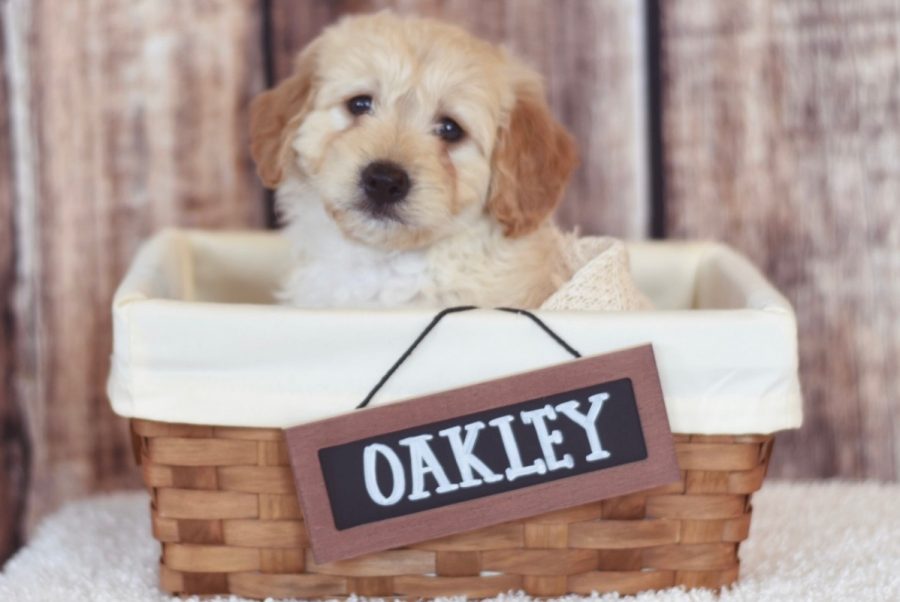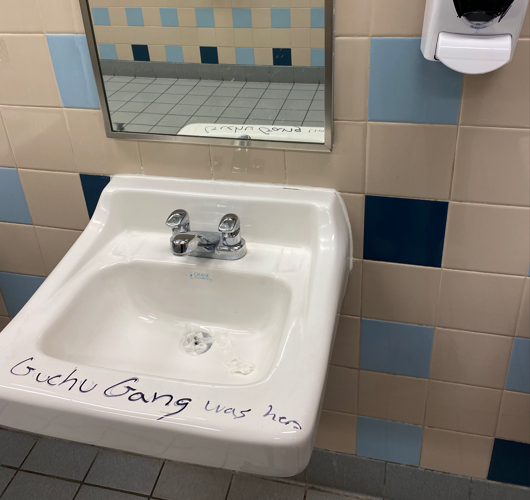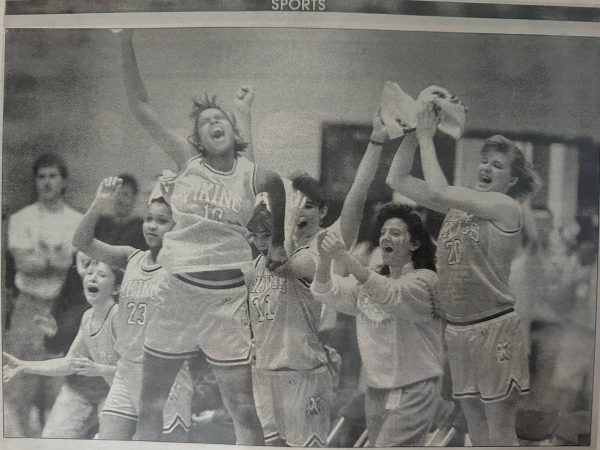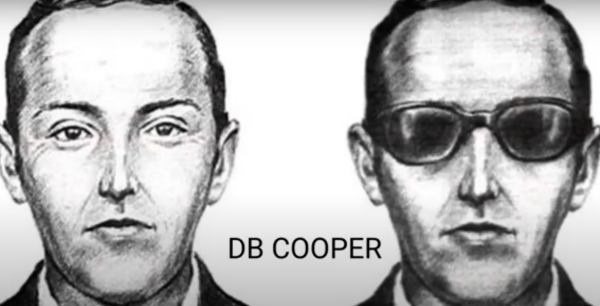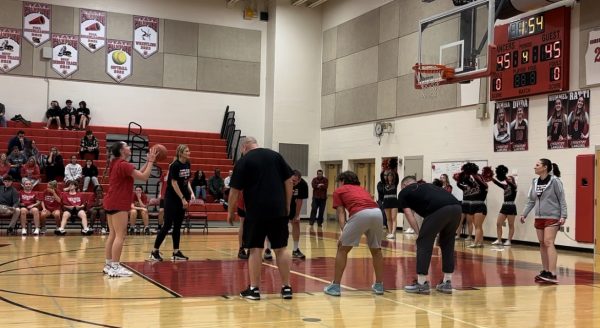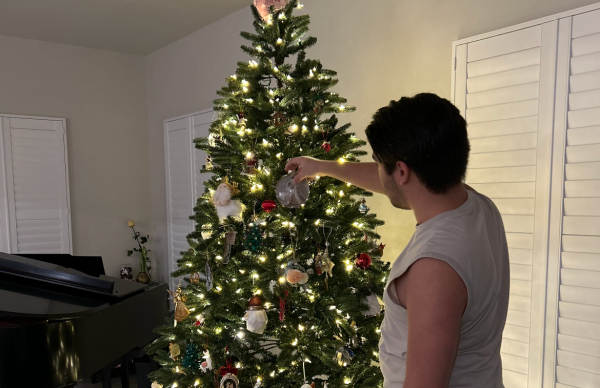Raining cats and dogs! Do pandemic puppies and quarantine cats develop separation anxiety?
When my dad was walking in downtown New Market and saw Ginger in the window at the K.A.T. Cafe we knew it was meant to be -Sierra Rossman
What’s furry, sleeps on your bed, and sometimes barks a little too loud?
A pandemic puppy–the cuddly, loving animal that everyone has needed this past year. Maybe your family adopted a cat. Being stuck inside for so long drove people crazy, and we needed the emotional comfort of our pets.
The loyal pet that has helped with our sanity is now going insane with sadness as we return to school or work, leaving an almost empty house behind.
In April near the beginning of the pandemic, it saw the national pet adoption rate jump 34 percent over the same time a year earlier, according to the group’s “Covid-19 Impact Report.” — The Washington Post
Separation anxiety is very common among house pets. Especially when their owner isn’t at home as much as they were when they first adopted. People are starting to go back to work and school, so our quarantine pets are getting left behind to wait at home. How does this affect them?
Shawn Snyder, a Volunteer Coordinator for the Frederick County Animal Control and Pet Adoption Center, gave some tips to owners for treating their dogs separation anxiety.
“Provide plenty of exercise and mental stimulation. A tired dog is often a relaxed dog,” Snyder said. “Counter Conditioning– Offer a high value reward every time you leave, such as a puzzle feeder or a Kong stuffed with something they like. Medication may also help in some cases.”

Senior Bailey Bennett adopted a miniature golden doodle puppy, Oakley, over quarantine. He is a super sweet and social dog and always gets along with everyone he meets. Oakley turns one year old soon.
“I think Oakley has developed a little separation anxiety, as he cries and pants when left alone in his crate; however he has gotten better as time has progressed,” said Bennett.
Bennett and her family decided to adopt Oakley during quarantine because they knew they would be home while he was a puppy. They didn’t initially want a new furry pup running around the house because nobody was home most of the day–school, work, and sports.
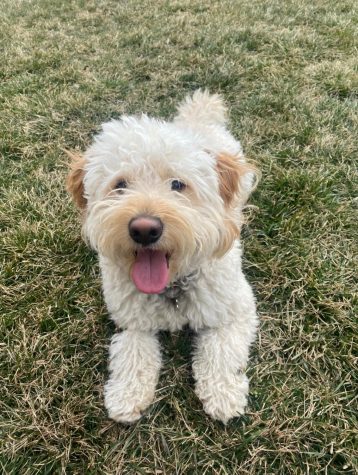
“When Covid hit, a lot of our activities were cancelled or moved to virtual, so it gave us an opportunity to be home while he was a puppy to get him adapted to his new home and do things like potty-train him,” Bennett said.
“It’s definitely been interesting for both Oakley and my family adapting to not being home 24/7 with him. It is a little hard, but thankfully the change has been gradual,” said Bennett. “Due to Covid restrictions, it was not a sudden change from everyone being home to everyone being away. As things opened up (my mom returned to work, I returned to school, etc.), Oakley has gradually been spending more time alone at home.”
Now it’s our pets who are experiencing the pandemic loss–they have lost their owners, too.
Adopting during quarantine might seem like a fun and exciting journey, but owners need to realize that they cannot have unrealistic expectations. Understand that as places start opening back up and people go back to work or school, they will have less time for their pets.
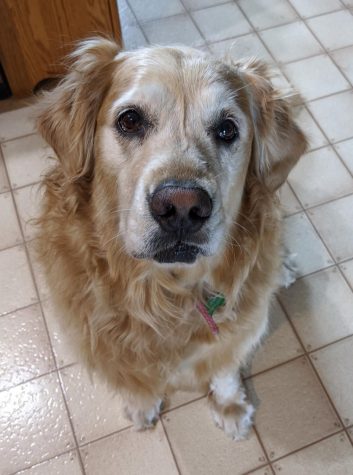
Of course it’s always encouraged to adopt and rescue animals. Recently, adoption rates have decreased in Frederick. Not as many animals are being adopted and have to be transferred to rescues.
Pre-Vet teacher, Patricia Beachy has picked up on some flags of separation anxiety in her dog, Rosie.
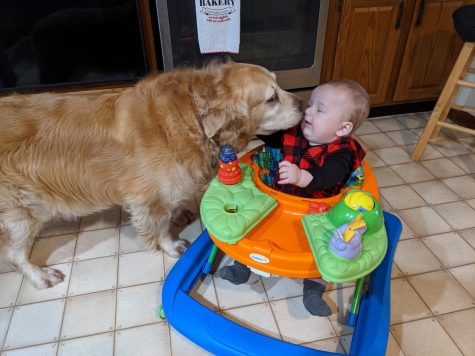
“My golden retriever, Rosie was so used to me being home every day,” said Beachy. “She’s six years old. She potty trained almost instantly and she’s never ever had a problem going to the bathroom in the house. But the first week I was back in school, she had two accidents while I was gone.”
“It’s unexpected, unknown, and I think those who’ve adopted and reached out are trying to find some sort of normalcy,” said Beachy. “It’s good to try and have something that you can control right now.”
Cats are much more independent and separation anxiety is much more rare
— Shawn Snyder
Adopting a pet has given people more control over the uncontrollable because feeding, caring for, and training a pet can make a sense of routine.
But people need to remember to give them that same energy when they resume their former routines. Owners can’t spend all their time with them and create an intense bond, only later to leave for most of the day.
Should people look out for certain breeds? The answer is yes. There are some breeds of dogs that tend to have higher chances of separation anxiety.
“Herding type dogs and other working dogs (Border Collies, Shelties, German Shepherds) are ‘wired’ to be constantly working. When no one is around there is no work for them to do. Cats are much more independent and separation anxiety is much more rare,” said Snyder.
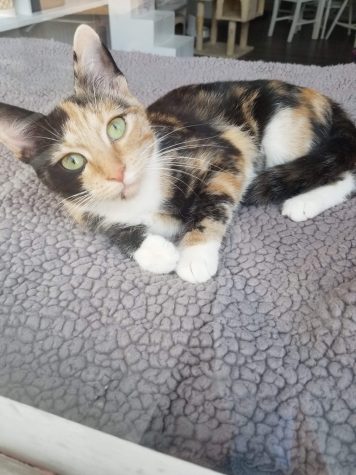
Senior Sierra Rossman had a similar situation to Bennett’s family. Rossman’s family decided to adopt a cat, Ginger from the K.A.T Cafe in New Market, MD.
“Ginger has really bonded with my mom, so when she first started going back into the office at work Ginger would mope around. My dad and I did our best to keep her distracted and playing throughout the day, though. I think she did experience some separation anxiety at first, but not as much anymore because she’s been very adaptable.”
Ginger is a very rambunctious and energetic cat. The Rossman family says she is always “bouncing off the walls” and running around chasing after something.
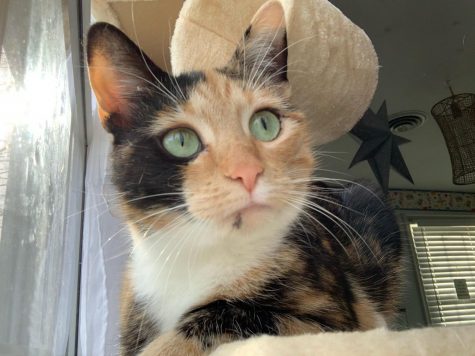
“She loves to chase after the other cats and play with anything she can find. She is overall a very happy cat who loves to be loved on and pet. She’s actually pretty small for an adult cat and that might be in part due to her having kittens when she wasn’t even a year old,” Rossman said. “She has grown since we got her, but she is still our ‘forever kitten.'”
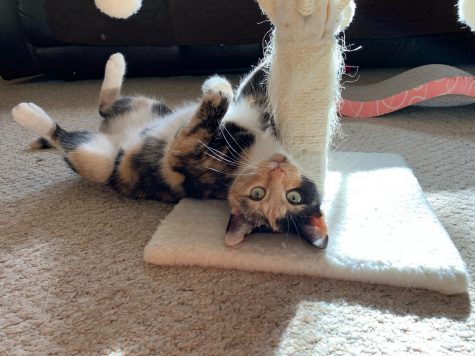
Ginger is such a happy cat. Is it because she has so much company and such great and loving owners? What if they had adopted her before Covid? Would she act differently without people around her all the time?
“If we had adopted Ginger before quarantine, I think that she would be just as happy. My family adopted our two other cats, Sparrow and Dozer, outside of quarantine (over two years ago) and they couldn’t be happier. Being home with Ginger almost every day has certainly made the bonding process easier and faster,” said Rossman.
Though it differs between different counties and adoption centers, FCAC (Frederick County Animal Control) adoption rates have dropped.
“So far this fiscal year, our adoptions are down 43%, sending animals to a rescue are up 29% and returning animals to their owners (strays) are down 30%,” said Snyder. “The downturn can be contributed to taking in less animals. So far we have taken in 24% less animals, compared to the same time last year.”
Because animal population has remained low during the pandemic, today the FCAC has 42 animals in their building. According the Snyder, the typical population for this time of year at FCAC is around 100 animals.
“We continue to be closed to the public but still offer all of our essential service. We implemented a virtual adoption program for cats and a semi-virtual adoption program for dogs. Many people have taken advantage of our adoption programs and the transition has been successful,” said Snyder.
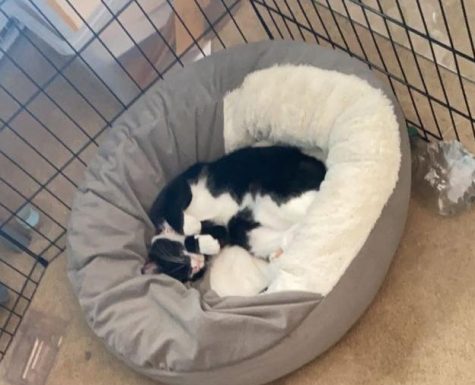
Another quarantine adoption was by sophomore, Alyssa Pizer. During the pandemic, Pizer’s family adopted a dog, Oakley, and two cats, Bo and Annie.
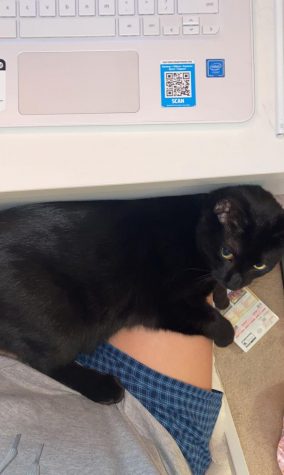
Pizer’s cats usually hang out with her during school when she is online. Whether sleeping on her lap, laying on her bean bag chair, or on her bed, they’re always ready to snuggle with her.
“i don’t think they have separation anxiety from any of us because we are constantly going out even in the beginning whether is for soccer or baseball or just going out to dinner. so we’re out of the house a lot and they’re used to that.”
Pizer’s family decided to adopt Oakley because her step mom, Trish Williams saw him while working at MAGSR (Mid-Atlantic German Shepherd Rescue).
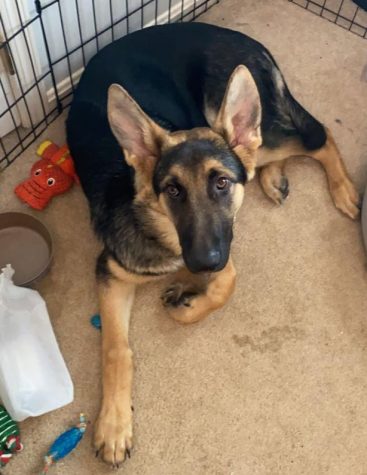
“Trish is usually home all the time and I think if she started going into the office every day our dogs would have a very hard time adjusting to that, but she worked from home even before we went into quarantine,” said Pizer. “I think Oakley is very used to us being home all the time and same with my cats.”
At MAGSR, they now offer virtual home visits or in person visits for adoptions.
“It’s a volunteer position that is rewarding but at the same time mentally exhausting because you’re not only finding dogs new homes, you have some dogs that are brought in and you see the situations that they were in and how scared the dog is; and you also have owner surrenders which are heartbreaking,” said Williams. “There are more happy times when a dog gets brought into a loving home and that is very rewarding.”
Your donation will support the student journalists of Linganore High School. Your contribution will allow us to purchase camera/recording equipment and software. We hope to raise enough money to re-start a monthly printed issue of our paper.


